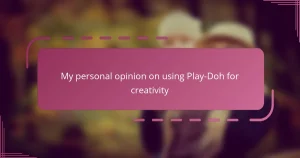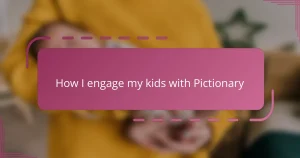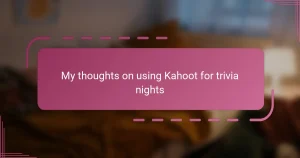Key takeaways
- Teamwork in parenting is built on trust and communication, enhancing children’s security and confidence.
- Minecraft fosters collaboration through problem-solving, role negotiation, and respect for each other’s ideas in a fun environment.
- Parents can improve teamwork by setting screen time limits, joining gameplay, and celebrating small achievements to reinforce collaboration skills.
- Challenges during gameplay, such as disagreements or technical issues, provide valuable lessons in resilience and the importance of clear communication.
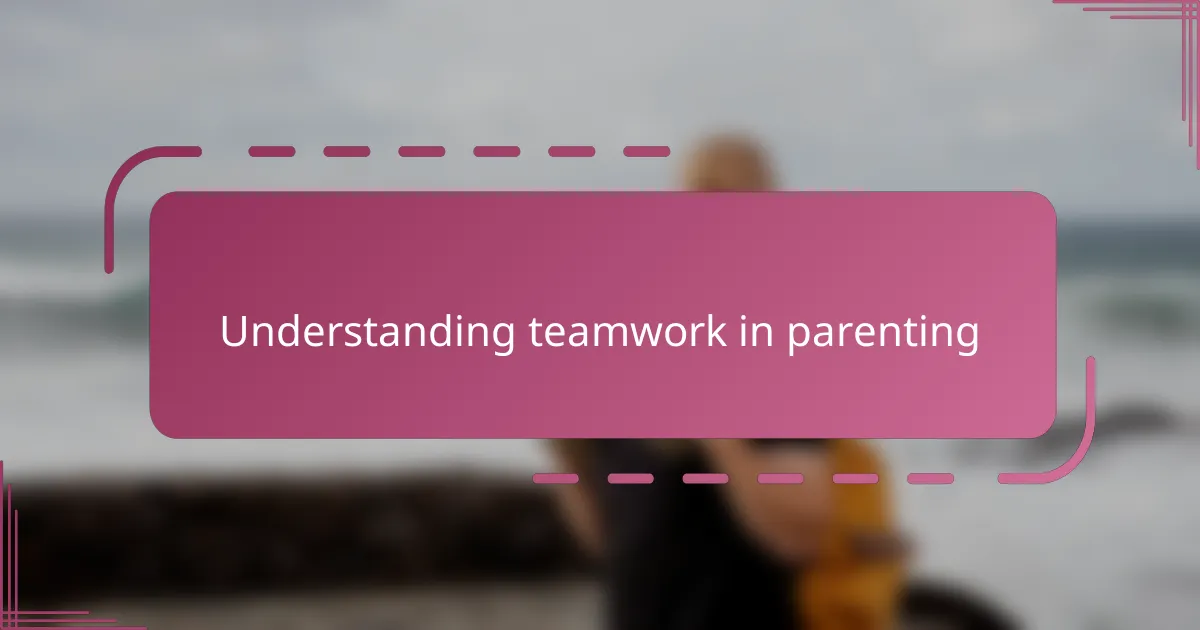
Understanding teamwork in parenting
Teamwork in parenting often feels less like a well-rehearsed dance and more like learning new steps on the fly. From my experience, it’s about trust and communication as much as it is about sharing responsibilities. Have you ever noticed how coordinating on something as simple as bedtime routines can reveal the strength of your partnership?
I recall moments when my spouse and I disagreed on handling a toddler’s tantrum but found common ground through honest conversation. These instances taught me that teamwork is not about perfection but embracing each other’s perspectives for the child’s well-being. Isn’t it fascinating how effective teamwork makes parenting less about “me” and more about “we”?
Understanding teamwork means recognizing that parenting is a shared journey filled with challenges and celebrations. When both parents actively engage, children sense that unity, which fosters security and confidence in their growth. What better foundation can we give our children than the example of collaboration right at home?
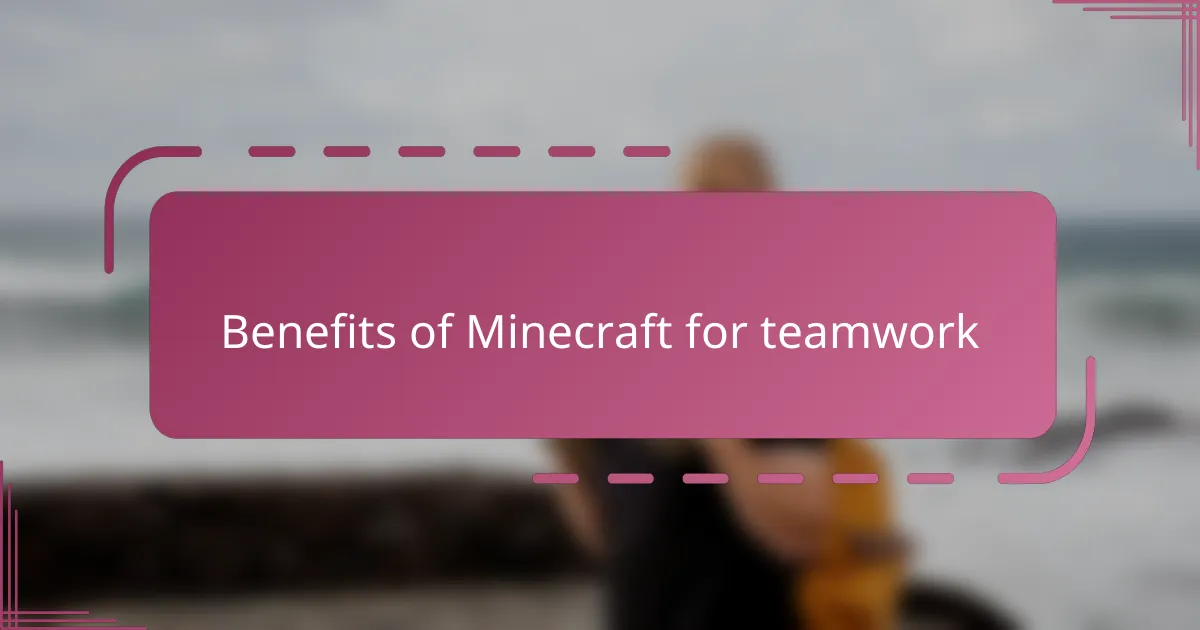
Benefits of Minecraft for teamwork
One thing I’ve noticed about Minecraft is how it naturally encourages kids to cooperate. When my children play together, they have to plan, build, and solve problems as a team, which mirrors the back-and-forth I see in real-life teamwork. Have you seen how they negotiate roles or share resources in the game? It’s teamwork in action, without the usual friction of disagreements.
What’s more, Minecraft’s world is vast but requires collaboration to achieve bigger goals. I remember a time when my kids and their friends worked for hours to create a complex castle, each contributing different skills. Watching them coordinate so smoothly made me realize how the game nurtures patience and listening—skills we often struggle to teach in traditional settings.
I also appreciate how Minecraft provides a safe space for kids to practice leadership and compromise. One evening, I overheard a heated discussion about design choices, and instead of shutting down, they learned to listen and adapt. Isn’t that the essence of good teamwork? This kind of experience, done through play, builds emotional intelligence and trust that go far beyond pixels on a screen.
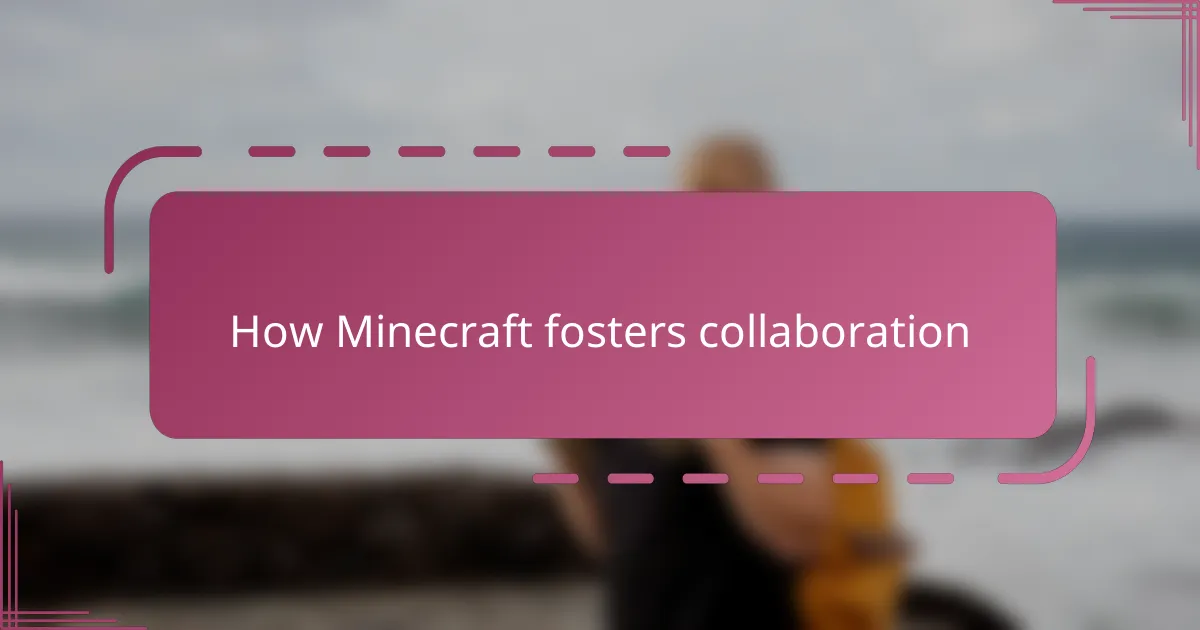
How Minecraft fosters collaboration
When my kids dive into Minecraft together, I notice how naturally they slide into roles without me having to prompt them. It’s like watching a tiny team in action—they communicate, decide, and adjust on the fly. Have you ever seen children so invested in reaching a shared goal that they forget about competing?
Another thing that strikes me is how obstacles in the game push them to brainstorm solutions collaboratively. I remember one evening when their carefully built bridge collapsed, and instead of getting frustrated, they teamed up to redesign it stronger. Isn’t that patience and creativity under pressure exactly what teamwork is about?
Minecraft also seems to invite respect for each other’s ideas even when opinions clash. A while back, I overheard my son convincing his sister to tweak their project’s colors, not by insisting but by listening and finding a middle ground. That teachable moment showed me how the game fosters not just cooperation but real empathy, something I find priceless as a parent.
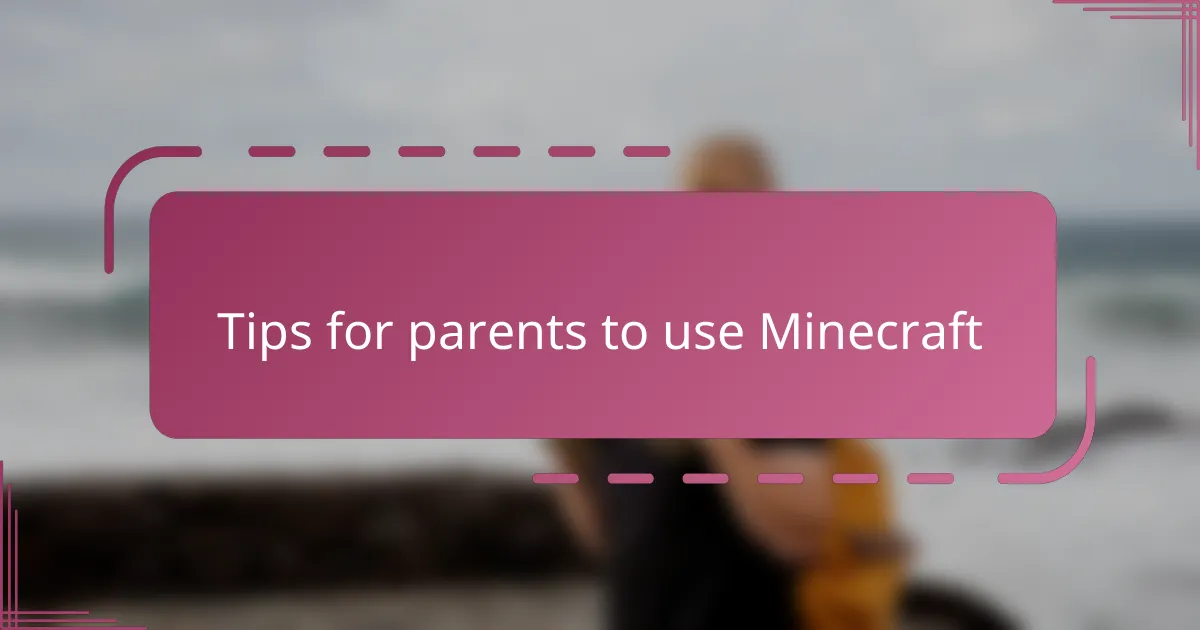
Tips for parents to use Minecraft
One tip I’ve found useful is setting clear boundaries around screen time before jumping into Minecraft sessions. When my kids know there’s a limit, their focus sharpens, and the teamwork they practice feels more intentional. Do you find that balancing playtime helps keep the experience positive and productive at home?
Another approach I like is joining in on the gameplay occasionally. Watching my children navigate challenges together while I observe or participate gives me insights into how they communicate and solve problems. Have you tried playing with your kids? It’s a wonderful way to connect and gently guide teamwork lessons without sounding like a coach.
Lastly, I encourage parents to celebrate small wins within the game, like finishing a project or resolving a disagreement. Praising these moments reinforces cooperation and shows kids that teamwork has real rewards. How often do we remember to highlight these wins in everyday life? Minecraft just makes it easy and fun to do so.
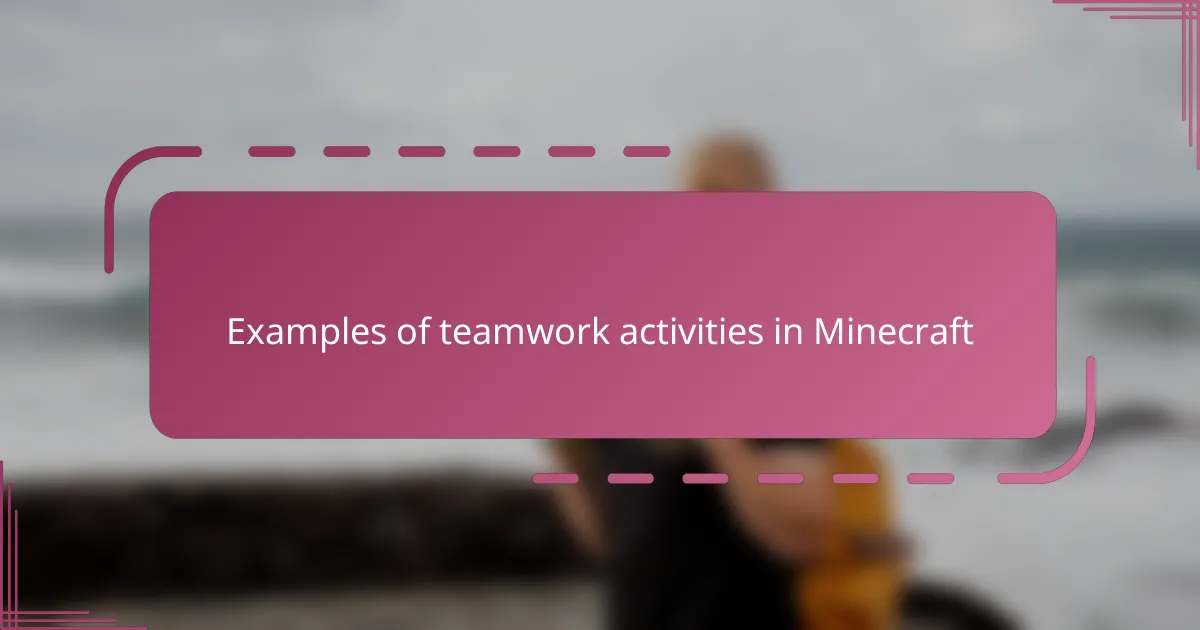
Examples of teamwork activities in Minecraft
One example that comes to mind is when my kids teamed up to build a thriving village in Minecraft. Each child took on a different role—one gathered materials, another planned the layout, and the third focused on decorating. Watching them coordinate so seamlessly made me realize how teamwork in the game mirrors real-life collaboration, where everyone’s effort is essential.
They also love embarking on group adventures, like exploring caves or defeating monsters. These missions require careful planning and trust, because if one person slips up, it can affect the whole team. Have you noticed how these shared challenges encourage kids to communicate clearly and support each other under pressure? It’s teamwork shaped by excitement and mutual reliance.
Another memorable moment was their joint effort to create a working roller coaster. It wasn’t just about building tracks; they needed patience to test and tweak the design together. At times, disagreements flared, but they learned to listen and compromise to reach a common goal. Isn’t that exactly the kind of cooperative spirit we hope to nurture as parents?
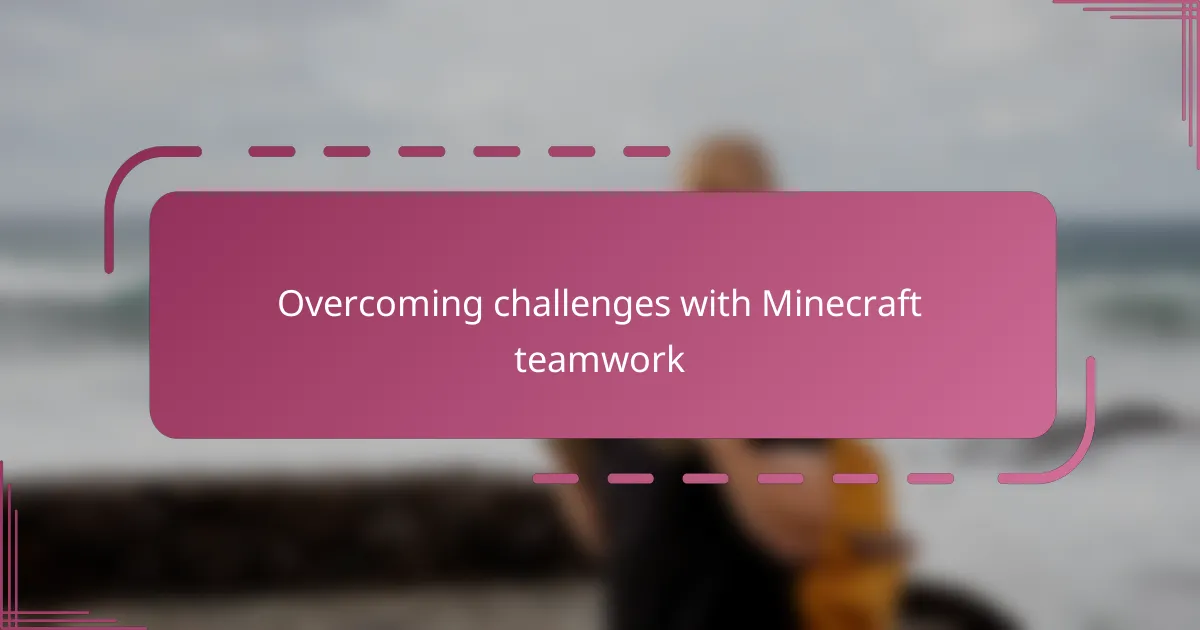
Overcoming challenges with Minecraft teamwork
Challenges in Minecraft teamwork often spring from misunderstandings or clashing ideas, just like in real life. I recall one evening when my kids argued over the design of their fortress, and it took patience and a bit of coaching to remind them that listening was just as important as building. Have you ever noticed how stepping back and encouraging open dialogue can turn conflicts into valuable lessons?
Sometimes, technical glitches or game limitations test their perseverance. Once, when their collaborative project was lost due to a game crash, I saw frustration peak—but instead of giving up, they regrouped and rebuilt together. That resilience, sparked by a shared setback, felt like a testament to how teamwork really takes root through overcoming obstacles.
I also find that setting small, clear goals helps kids focus their energy and reduces confusion during play. When my children agree on what success looks like before starting, they tend to stay more cooperative and motivated. Isn’t that a simple but powerful way to turn potential chaos into structured collaboration?
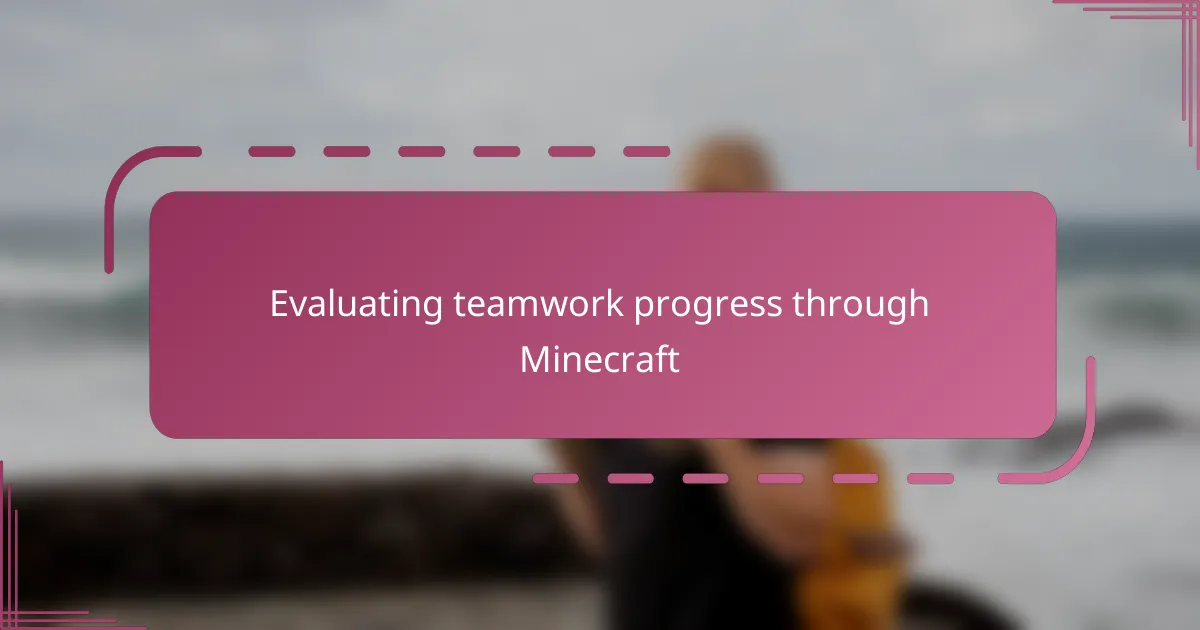
Evaluating teamwork progress through Minecraft
Evaluating teamwork progress through Minecraft often becomes surprisingly clear when I watch how my kids reflect on their gameplay afterward. They’ll talk about what worked well and what didn’t, just like teammates debriefing after a game. Have you noticed how these quick conversations reveal their growing ability to assess their own strengths and weaknesses in collaboration?
Another thing I’ve observed is that progress becomes visible in subtle ways—like when they naturally start taking turns leading or step in to help without being asked. One time, after completing a complex build, my children impressed me by thoughtfully discussing how better communication helped them avoid mistakes. Isn’t it rewarding to see such self-awareness develop from something as simple as playing a game?
I also find that keeping track of repeated behaviors, such as how they resolve disagreements or share resources, gives practical insight into their teamwork evolution. For example, my daughter has become more patient when listening to others’ ideas, a change I attribute to these Minecraft sessions. Have you considered how these small shifts might translate to real-life family dynamics and cooperation?
